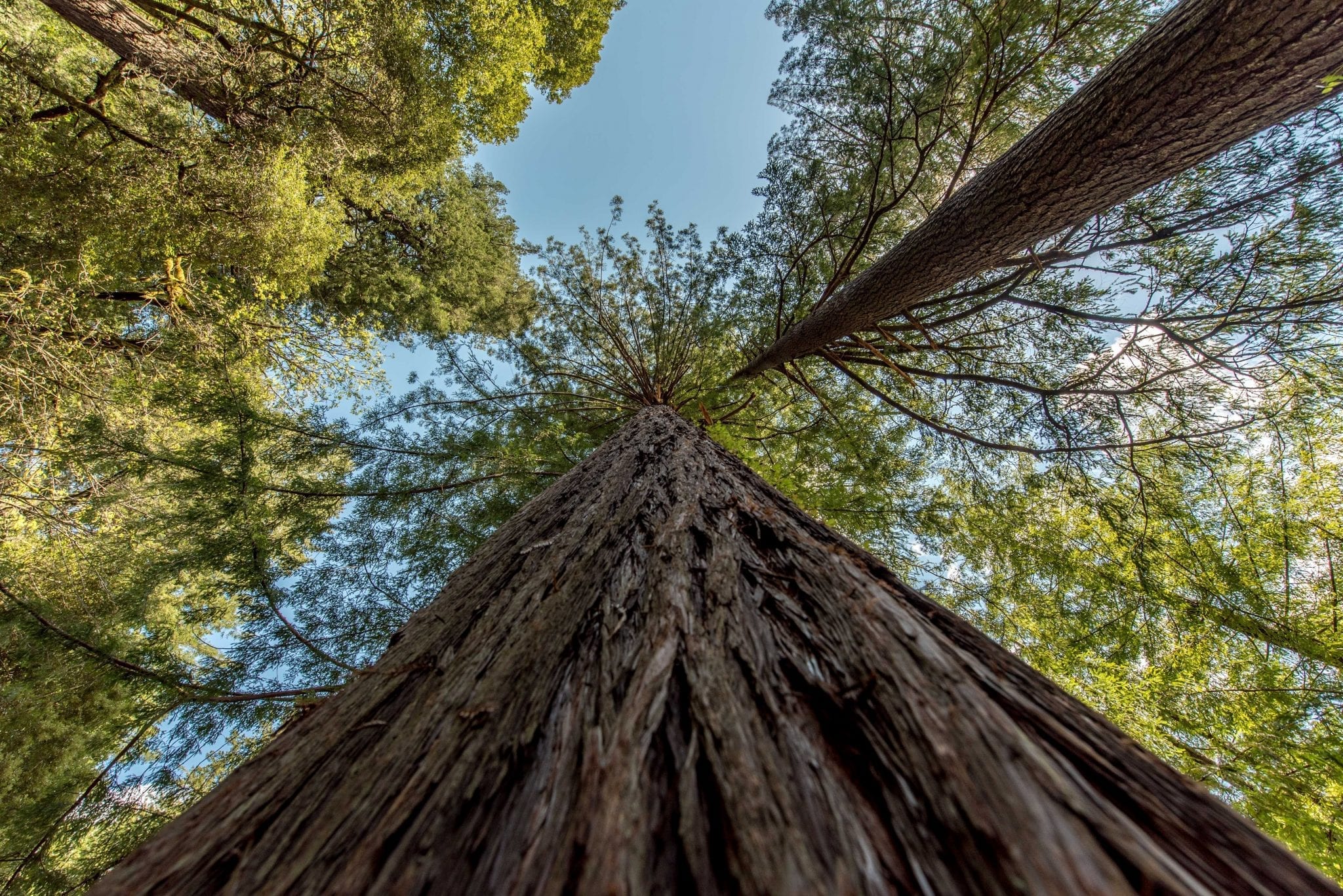How Do Giants Grow so Tall?

On 25 August 2006, in a remote area of Redwood National Park, naturalists Chris Atkins and Michael Taylor discovered the tallest tree in the world, a coast redwood, Sequoia sempervirens, more than 115 meters tall. They named it Hyperion.
Sequoias are natural giants, but what enables them to grow to these heights? As with all trees, water travels from the roots to the crowns so that leaves can carry out the photosynthesis and thus support the tree’s growth. But in particularly tall trees, how does water overcome gravity? The ability of tall trees to transport water and nutrients hundreds of meters relies on transpiration through leaves and needles. In this process, water evaporates through specialized openings in the leaves, called stomates, which create a negative pressure that pulls water into the leaf from the vascular tissue, the xylem. At the same time, this pressure in the xylem extends all the way down through the trunk to the roots resulting in an increase of water uptake from the soil. This is a seriously sustainable system: estimates of Hyperion’s age range from 600 to 800 years old.
Transpiration through leaves and needles In this process, water evaporates through specialized openings in the leaves, called stomates, which create a negative pressure that pulls water into the leaf from the vascular tissue, the xylem. At the same time, this pressure in the xylem extends all the way down through the trunk to the roots resulting in an increase of water uptake from the soil. This is a seriously sustainable system: estimates of Hyperion’s age range from 600 to 800 years old.










